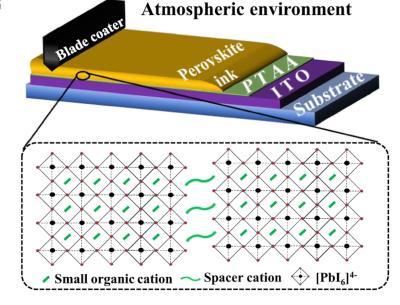New universal passivator system enables high-performance single-junction and tandem perovskite solar cells
Researchers from China's Hebei University of Technology, Fudan University, Fuyang Normal University, Chinese Academy of Sciences (CAS), Macau University of Science and Technology, Kunming University of Science and Technology and France's CNRS have reported an innovative passivation strategy that is said to enable record power conversion rates and enhanced operational longevity of single junction and tandem perovskite solar cells (PSCs).
The team has developed this innovative strategy to address the issue of interfacial trap-assisted nonradiative recombination, which has been known to hinder the performance of perovskite-based photovoltaic technologies. The new passivator is identified as L-valine benzyl ester p-toluenesulfonate (VBETS) and using it under optimal conditions yielded PSCs that achieved a power conversion efficiency (PCE) of 26.28%.







